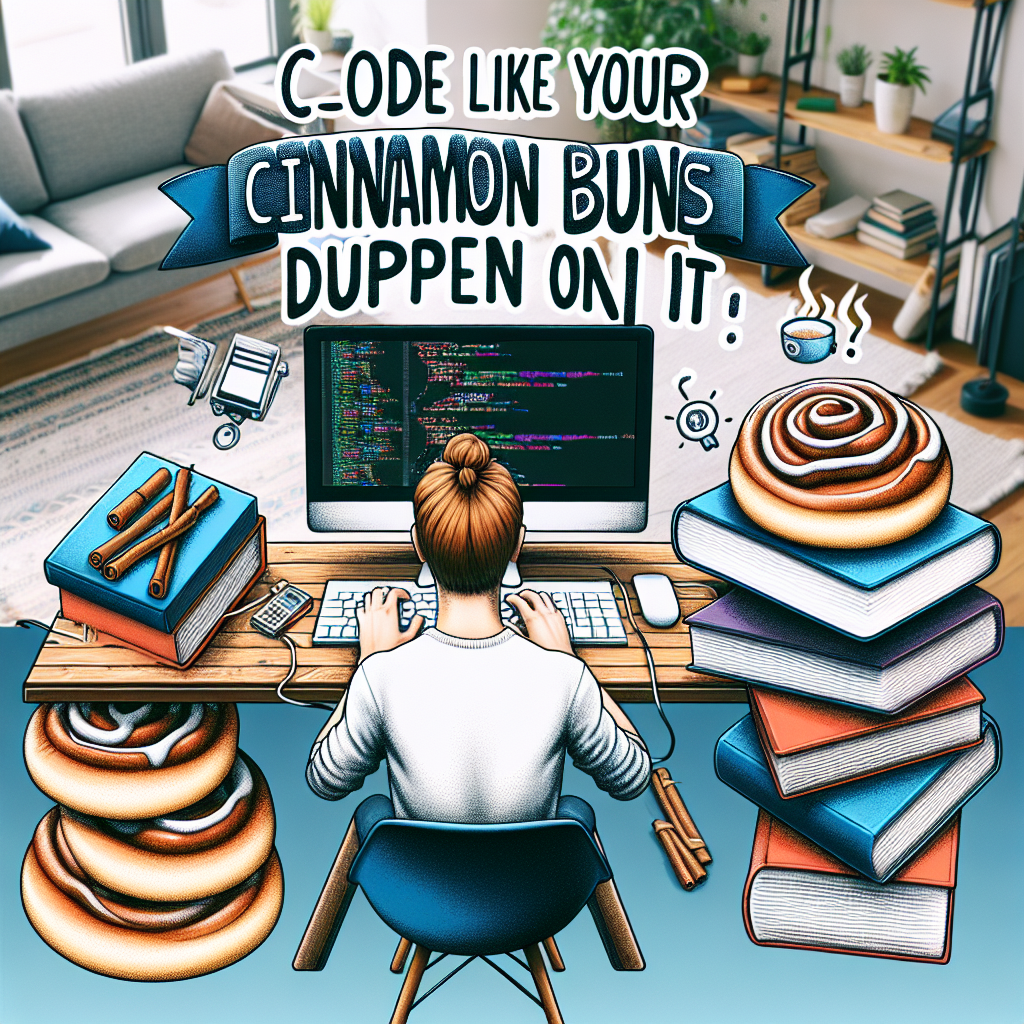
Code Like Your Cinnamon Buns Depend On It
by bernt & torsten
Picture this: a roomful of sleep-deprived souls peering into the void of endless meetings. They brainstorm, analyze, sprint, review, and refine. They invent methodologies with fancy acronyms, write documents in every incompatible format known to humankind, and argue over tools like they're choosing their Hogwarts houses. All this effort… and what do they have to show for it? A mountain of sticky notes, a graveyard of flowcharts, and a production environment that’s one commit away from bursting into flames.
Me? I say skip the preamble. Roll up your sleeves and start coding. Let’s chat about why.
Talk Less, Code More
"But wait!" cried the committee heads. "Without a Grand Plan, how will you know what to do? You’ll waste time wandering down dead ends!"
First of all, dead ends are my playground. Iterating through bad ideas is how you uncover corner cases, bust myths, and rewrite those vague “requirements” into something resembling reality. Think of it like baking cinnamon buns. You can scroll through a dozen “Best Bun Recipe EVER!!!” videos on YouTube or get your hands dirty: mix flour, sugar, yeast, and a truckload of cinnamon, then bake until your kitchen smells like heaven. Sure, the first batch might look like hockey pucks, but by round three, you’ll be the neighbourhood’s Cinnamon Czar.
In software, the ingredients are your code. Experiment. Test. Fail. Adjust. It’s faster—and tastier than debating metaphors in a meeting room.
Keep Your Mess Close
Every chef has a secret stash: that drawer full of mismatched utensils, crumpled recipes, and rogue spatulas. Developers, we’re no different. While working, my mock data and experimental snippets sit side-by-side with production code, like a misfit family at Thanksgiving dinner. Sure, some variables are hardcoded, some functions return fake data, and a “temporary\_fix\_v42\_final” file lurks. But it works.
Why? Because I’m building. I’m iterating. And no one—not my boss, not the QA team, not even my cat—cares how ugly the code looks as long as the app works when it matters.
Pro tip: don’t commit your chaos. Keep your experimental code local. Think of it as your kitchen counter—messy, creative, alive. Your spotless dining table? That’s for production.
Print Statements Are My Debugger
Oh, the noble debugger, that marvel of modern engineering. Sure, it can inspect your system’s state at runtime. But can it rewrite your implementation on the fly? Nope. So, I embrace the “print everything” philosophy.
"But isn’t that a waste of time?" someone inevitably asks. I’ll take a hot-reloading tool like Nodemon over a debugger any day. Save the file, restart automatically, and we’re back in action. It’s like having a sous chef who resets your kitchen every time you burn a batch.
If restarting is cheap, experimentation becomes frequent. And frequent experiments lead to better buns—er, code.
Eye Level Is Buy Level
You know how grocery stores put the good snacks at eye level? That’s my philosophy for organizing code. The most important functions? They go at the top of the file. Supporting characters come next. It’s not about artistic suspense; it’s about practicality. When I open a file, I want to know what’s going on without scrolling through 200 lines of “parseData” nonsense.
Consistency Over Cleverness
Here’s a hard truth: your code isn’t art. It’s a casserole. Functional, consistent, and designed to feed a team of hungry developers. So, pick a style and stick with it. No clever shortcuts, no rogue lambdas where none belong. If the team uses dirt roads (read: verbose code), don’t build a shiny highway of compact genius in the middle of nowhere. It’ll just confuse everyone, including you in the future.
Even when working solo, consistency is king. Write every function like it’s part of a choir: harmonious, predictable, and designed to hit the same notes every time. That way, you’ll never find yourself cursing past you for inventing a one-off "brilliant" solution that no one else understands.
Pipe Dreams and Point-Free Style
Let’s talk pipes. It is not the plumbing kind, though. Come to think of it, the analogy holds. In some languages, you can flow data through functions like water through pipes, with no need for intermediate variables. It’s clean. It’s elegant. It’s… well, let’s not oversell it. But it works.
Instead of chaining endless operations with clunky intermediate steps, I use a point-free style in which functions connect seamlessly. This is like assembling IKEA furniture but without existential despair.
The Chaos Lab
My process might look like chaos from the outside: one file for everything, mock data tangled with production code, and print statements cluttering the logs. But from the inside? It’s a laboratory. Every project is an experiment, and every experiment is written in the only language that matters: computer-speak.
At the end of the day, no number of English-language tickets, plans, or debates can replace the clarity of the running code. So, skip the endless meetings. Bake some buns. And code like no one’s watching.

Tech Disillusionment
For four decades, I have worked in the tech industry. I started in the 1980s when computing...

A Poem: The Consultant's Message
On a Friday, cold and gray,
The message came, sharp as steel,
Not from those we...

Using AI to Plan Wall Repair and Gutter Installation
In this article, I will share my experience using AI to plan the work required to fix a wall...